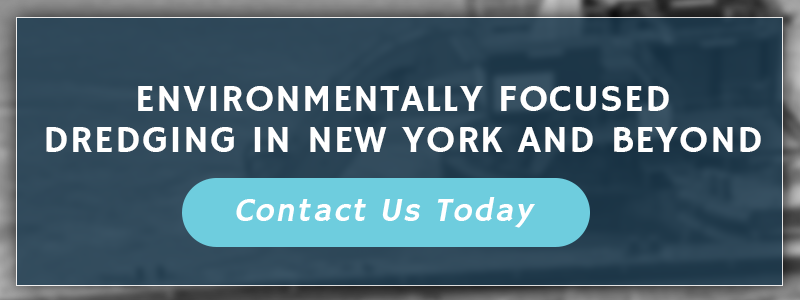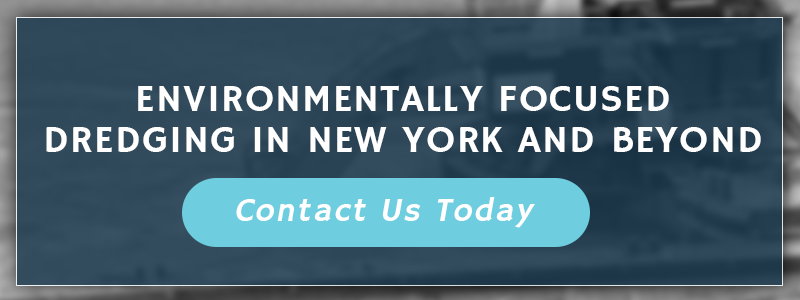In a previous post, U.S. Aqua Services covered the pollution of the Hudson River. Now a major Superfund Site, the river is highly polluted by a high concentration of a toxic substance known as “polychlorinated biphenyls,” or PCBs. As a follow up to that blog post, we’ll explore the role that dredging plays in managing this contentious Superfund Site.
Why does the Hudson River need to be Dredged?
More than 200 miles of the Hudson River are considered by the Environmental Protection Agency are consider to be polluted to the point where it is a threat to human health. The PCBs in the river are affecting the rivers ecosystems, poisoning the fish and birds who live there, as well as the humans who eat the fish from the river. The PCBs found in these contaminated soils and fish can lead to a number of concerning health conditions, like cancer and thyroid disease, along with low birth weights in newborns, as well as learning and memory problems and immune system disorders.
GE and some researchers suggested that the river would naturally clean itself of these pollutants. However, this is not the case, and the PCBs first introduced more than 60 years ago continue to have an impact on the health and wellness of communities along the Hudson. When it was found that the river wasn’t cleaning itself, it was determined that an intervention of some kind was needed.
What is being Done?
In February of 2002, the EPA issued a Record of Decision that determined that more than 2.65 million cubic yards of PCB-contaminated soil and sediment needed to be removed from a 40-mile section of the Hudson River. This stretch ran from Fort Edward to Troy, New York.
GE had started identifying which of these “hot spots” needed to be dredged by collecting sediment samples. More than 60,000 samples were taken, which allowed the EPA to identify three sections of the river that were of the gravest concern.
Dredging the Hudson River
The river was divided into sections 1 through 3. Section one ran from the old Fort Edward Dam to the Thompson Island Dam. Section 2 stretched from the Thompson Island Dam to the Northumberland Dam, and Section 3 covered from Northumberland Dam to the Federal Dam in Troy. Within each section, the sediment was divided into “certification units” there were approximately five acres in size. Dredging equipment was brought in to target each of these CUs, one at a time to carefully and thoroughly remove the contaminated soils.
The dredging began in 2009 and continued into the fall of 2015. During that time, the dredging was broken into two phases. Phase 1 ran from May to November 2009 and dredged more than 283,000 cubic yards of sediment. The material was extracted from a six-mile section of river near Fort Edward. Throughout 2010, stakeholders and the EPA reconvened and evaluated the effectiveness of this first phase. Phase 2 was developed during this period, and began in June, 2011. During the four years of Phase 2, teams of dredging equipment and machinery carried out a large scale environmental remediation project. Throughout the three sections of the river, an estimated 2.5 million cubic yards of contaminated sediment was dredged.
In addition to the dredging efforts, environmental groups planted local aquatic plants and undertook habitat reconstruction projects to speed up the effects of the dredging.
The Results of the Dredging
Ultimately, General Electric would spend six years and millions of dollars to clean up the Hudson River, but today, the results of their work are being called into question. Many environmental groups are arguing that the initial dredging project simply wasn’t enough, and that GE needs to fund another round of dredging, possibly even more extensive than the first project.

As a leading dredging company in New York, U.S. Aqua Services has watched the Hudson River Superfund project with interest. Our commitment to environmentally sound practices makes us willing to take part in further dredging operations should they be required. If you’re in need of dredging equipment, we rent out our complete suite of high-end dredging equipment. Simply contact us today to set up a site visit to get started.




